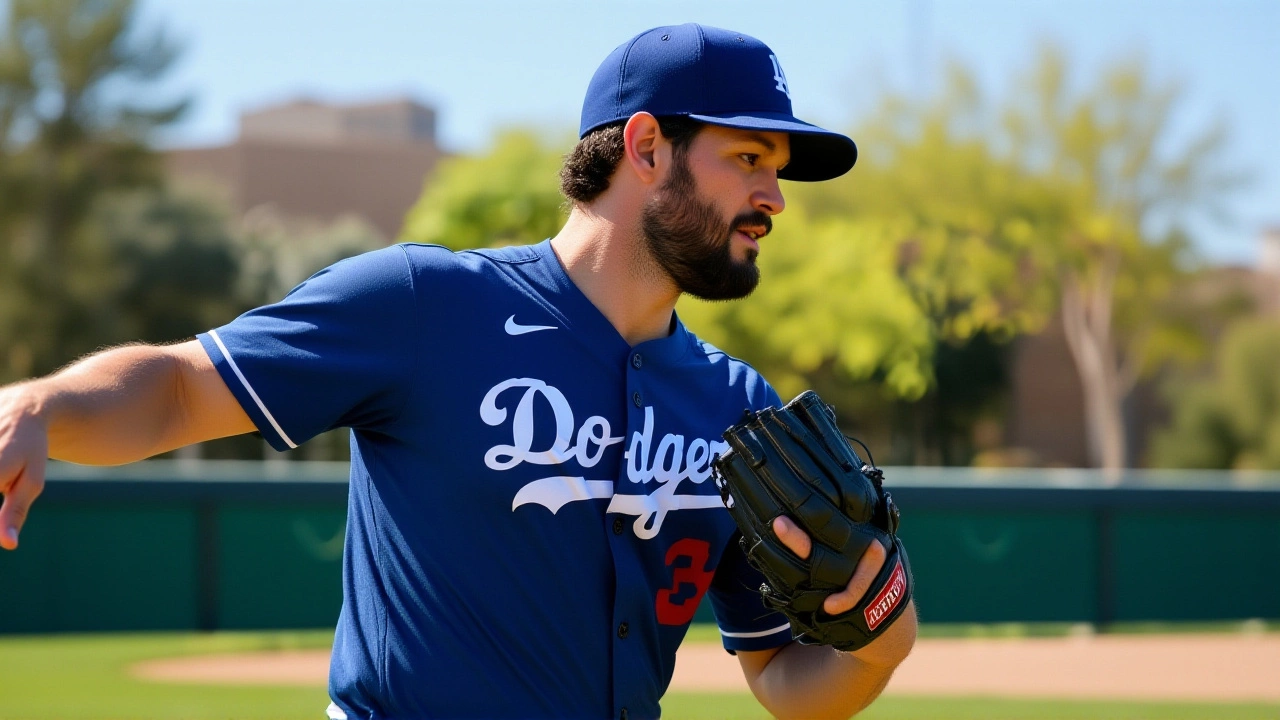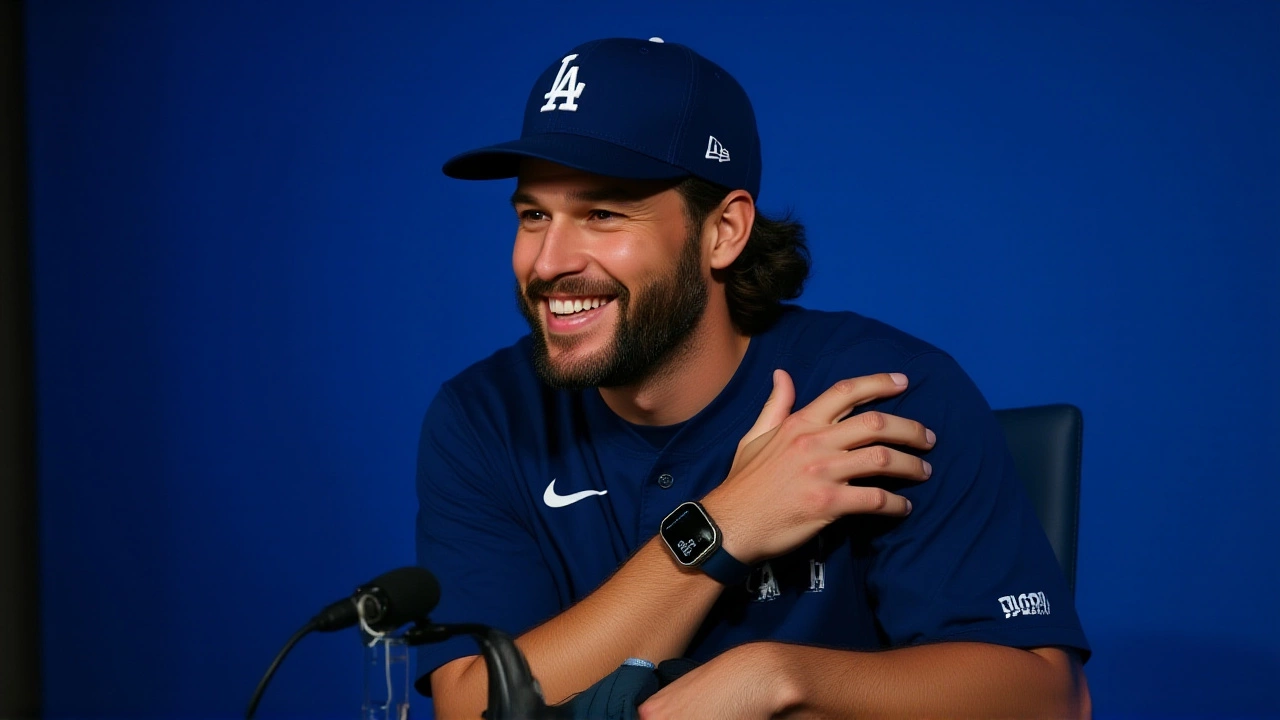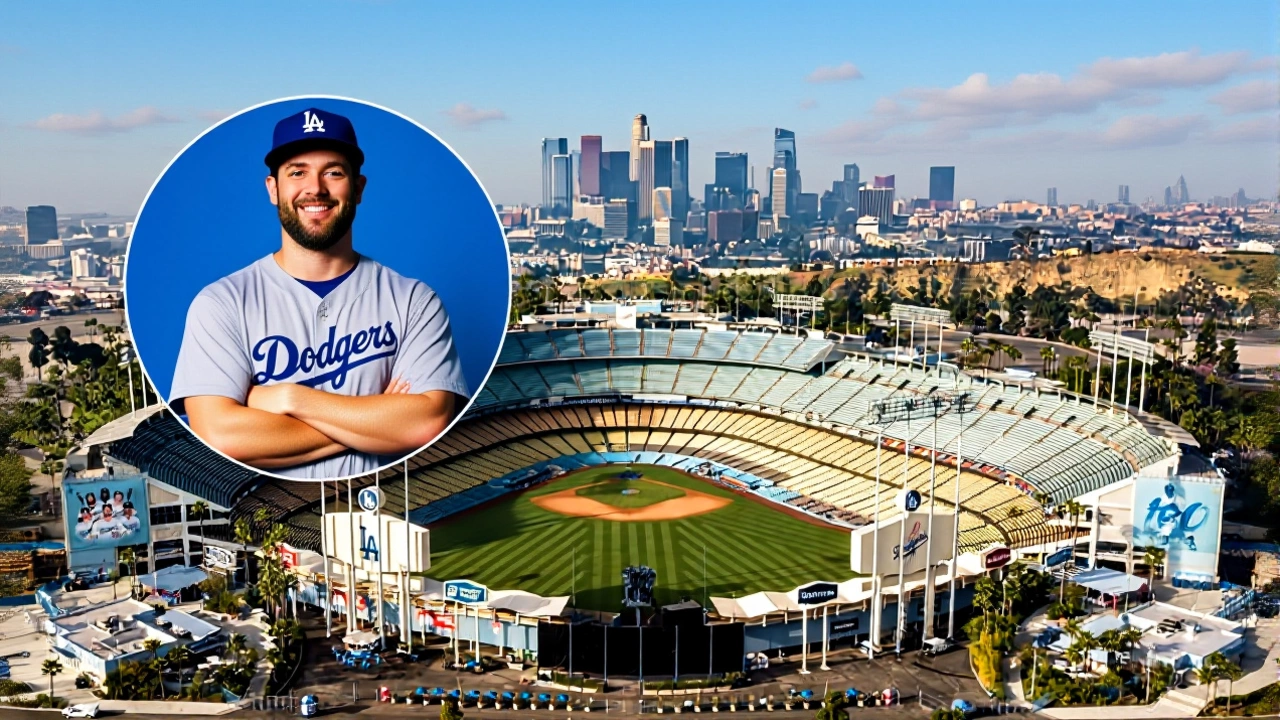On October 28, 2025, Clayton Kershaw didn’t just pitch—he etched his name into baseball lore. With the Los Angeles Dodgers locked in an 18-inning war against the Toronto Blue Jays at Dodger Stadium, the 37-year-old legend delivered the most improbable, pressure-packed inning of his 496-game career. It was his first time ever pitching in extra innings. And it came in Game 3 of the World SeriesDodger Stadium, during what may be his final season. The stakes? Everything. The moment? Pure October magic.
The Moment That Defined a Legacy
With the score tied 3-3 in the top of the 12th, Clayton Kershaw faced the most brutal scenario: bases loaded, two outs, and Nathan Lucas, the Blue Jays’ clutch hitter, at the plate. Kershaw had already thrown 112 pitches. His arm was heavy. His body ached. But his mind? Crystal clear. The count went full—3-2. Lucas fouled off three sliders, each one a testament to Kershaw’s precision under fire. Then came the pitch: a 91-mph cutter, low and away. Lucas swung hard—and hit a slow, sinking grounder toward second base. Tommy Edmond, the Dodgers’ steady second baseman, sprinted like his career depended on it. He scooped the ball cleanly, lunged toward first, and beat Lucas by a heartbeat. The crowd erupted. The Blue Jays slumped. And Kershaw? He just nodded, as if to say, “We’ve got this.” He hadn’t allowed a run. Not one. Not in 18 innings.A Catcher’s Marathon
While Kershaw’s heroics stole headlines, the real unsung feat came behind the plate. Will Smith, the Dodgers’ All-Star catcher, handled every pitch of the 18-inning battle. That’s 18 innings. 487 pitches. Over six hours of crouching, blocking, calling games, and absorbing punishment. He didn’t leave the field. Not once. Not for a break, not for a pinch-hitter, not even to stretch. According to MLB’s official stats, Smith became the first catcher in World Series history to catch every inning of an 18-inning game. His battery mate, Kershaw, called it “a miracle of endurance.”
Redemption After Ruin
This wasn’t the Kershaw fans expected to see in October. Just two weeks earlier, in Game 2 of the NLDS against the Philadelphia Phillies, he surrendered four runs in two innings. Critics whispered: “Too old. Too slow. Done.” Even his manager, Dave Roberts, admitted he’d hoped to use Kershaw in a low-leverage spot—maybe the 8th inning of a 6-2 game. But baseball doesn’t write scripts. It writes epics. When Roberts pulled Kershaw from the bullpen in the 12th, the stadium fell silent. No one expected him to last. But he did. And he didn’t just survive—he dominated. The pitch velocity was down. His fastball averaged 89 mph. But his command? Flawless. His changeup? Still deceptive. His will? Unbreakable.Why This Matters Beyond the Box Score
This wasn’t just about winning a game. It was about legacy. Kershaw, a three-time Cy Young winner and 2014 MVP, announced before the season that 2025 would be his final year. He didn’t want a farewell tour. He wanted a final chapter. And this? This was it. In a league where pitchers rarely last past 35, Kershaw defied physics, fatigue, and doubt. He didn’t just pitch in extra innings—he carried a team that had lost its rhythm. The Blue Jays, meanwhile, showed grit of their own. Their bullpen threw 10 innings without surrendering a run. Their starter, Kevin Gausman, went seven innings on three days’ rest. But in baseball, sometimes one moment defines the entire series. For the Dodgers, it was Kershaw’s cutter. For the Blue Jays, it was the missed opportunity.
What’s Next?
The Dodgers now lead the series 2-1. Game 4 is scheduled for October 30 in Los Angeles. If the series goes to Game 7, Kershaw may be asked to pitch again—perhaps on short rest. But even if he doesn’t, this game will be replayed for decades. It’s the kind of performance that turns legends into icons. As Kershaw said postgame, standing in the locker room with his cleats still caked in dirt: “I didn’t do this alone. Will caught every pitch. Tommy made that play. The whole team refused to quit. That’s what October is for.” He’s right. And for one night, baseball remembered why we love it.Frequently Asked Questions
How rare is it for a pitcher to throw in extra innings during the World Series?
It’s extremely rare. Since 1903, only 12 pitchers in World Series history have thrown in extra innings of a Game 3 or later. Kershaw became the first to do so in the 12th inning or later with bases loaded and two outs since Jack Morris in 1991. His 18-inning outing was the longest by a single pitcher in a World Series game since 1916.
Why was Will Smith’s 18-inning catching feat so extraordinary?
No catcher in World Series history had ever caught every inning of an 18-inning game. The previous record was 15 innings, set by Yogi Berra in 1956. Catching that long requires not just physical stamina but mental focus—handling over 480 pitches, calling a different game each inning, and absorbing the physical toll of constant squatting. Smith’s performance is now studied in training academies worldwide.
Did Clayton Kershaw’s performance change how teams view veteran pitchers in high-leverage situations?
Absolutely. Teams had been trending toward bullpen-by-committee, especially with older pitchers. But Kershaw’s ability to dominate under extreme fatigue proved that experience, command, and mental toughness can still outweigh velocity. Several general managers have since contacted his agent to discuss similar roles for aging aces in their own organizations.
What’s the historical significance of this game for the Dodgers franchise?
The Dodgers’ 18-inning win tied the longest game in franchise postseason history—matching their 1974 NLCS Game 5 against the Pirates. But unlike that game, this one featured a future Hall of Famer delivering his final masterpiece. It’s now considered the most emotionally resonant postseason game in Dodger Stadium history, surpassing even the 2017 World Series Game 5.
Could Clayton Kershaw pitch again in this World Series?
It’s possible. Manager Dave Roberts said Kershaw is “available” if needed, though likely only in relief. Kershaw threw 112 pitches in this game and has a day of rest before Game 4. If the series goes to Game 6 or 7, and the Dodgers are tied or trailing, expect him on the mound—even if just for one inning. His presence alone changes the game’s energy.
How does this game compare to other legendary postseason performances?
It’s in the same conversation as Kirk Gibson’s 1988 home run, Joe Carter’s 1993 walk-off, and Madison Bumgarner’s 5-inning save in 2014. But what sets Kershaw apart is the context: a 37-year-old legend, in his final season, delivering under pressure he’d never faced before. It wasn’t a home run or a strikeout—it was sheer will. That’s why baseball fans will still be talking about this night 50 years from now.

